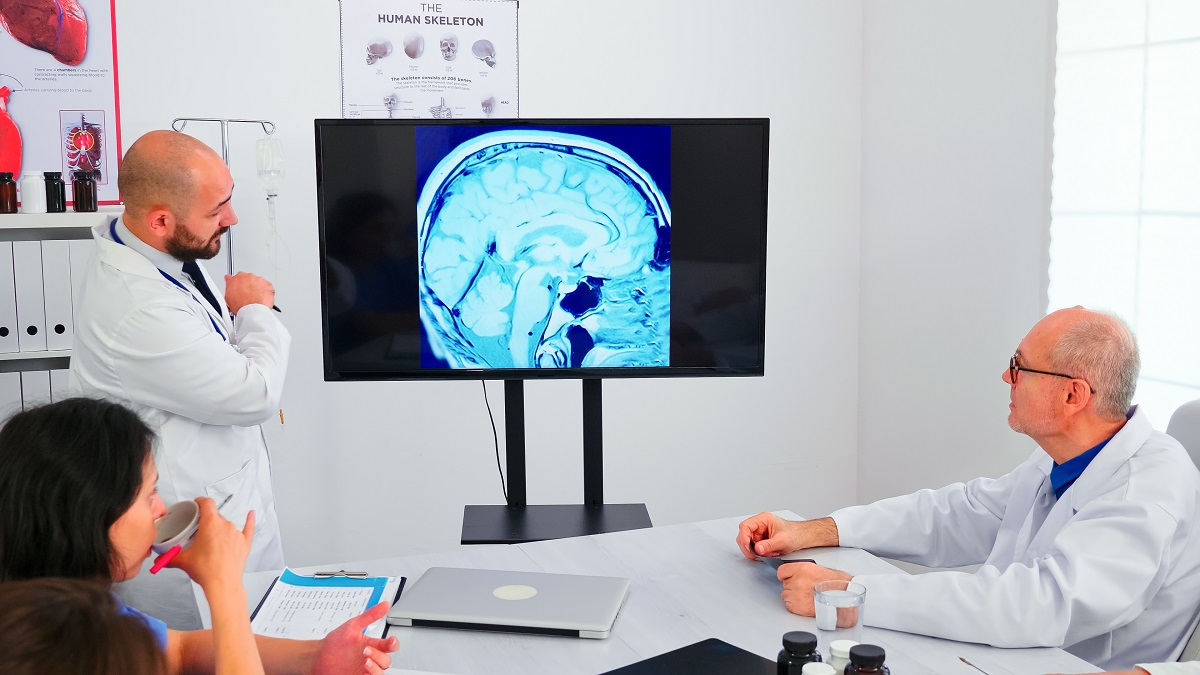A cancer type that begins in the brain or spinal cord cells is called glioblastoma. Usually, it grows and invades healthy tissue quickly and causes them to die. This cancer type appears in the cells known as astrocytes, which are responsible for supporting nerve cells.
While it may happen at any age, mostly occurs in older adults. Gradually worsening of the headaches, nausea, vomiting, blurred or double vision, speaking problems, and seizures are symptoms that may occur in people with glioblastoma. Moreover, they can also experience problems with coordination, balance, and movements of different body parts (such as the face).
Unfortunately, it is not possible to cure this cancer type but proper treatment can slow down the growth and lessen the symptoms.
Symptoms
Check below some symptoms that may occur in people with this cancer type:
- Headaches (usually happen in the morning)
- Nausea
- Vomiting
- Confusion and irritability
- Reduced brain function (including troubles with thinking and understanding information)
- Personality changes
- Vision problems (including blurred vision, double vision, or peripheral vision loss)
- Trouble speaking
- Muscle weakness that usually occurs in the face, arms, or legs
- Decreased sensation of touch
- Seizures
If you experience any of the previous symptoms or any others that bother you, immediately contact your healthcare professional.
Causes
In most cases, the cause of glioblastoma remains unknown. However, physicians think this cancer type occurs due to brain and spinal cord cell DNA mutation (also called changes or variations). The information about how a cell should grow, multiply, and die is held in the cell’s DNA. However, the mutated DNA gives different instructions to the cancerous cells, which leads to their growth and multiplying in a fast way. As a result, abnormal cells continue to live while healthy ones die. Too many abnormal cells form a tumor that usually grows and presses on nearby tissues and nerves of the spinal cord and brain. As a result, symptoms and complications of glioblastoma occur.
However, these tumors may break and spread throughout the body (metastasize).
Risk Factors
Doctors suggest that the following factors may elevate the risk of glioblastoma. For example:
- Age – The risk of glioblastoma increases as a person aging but it can happen at any age as well.
- Radiation exposure – Those who are exposed to a radiation type known as ionizing radiation have an increased risk of developing glioblastoma. For instance, radiation therapy used to treat cancer is ionizing radiation.
- Inherited Syndromes – Some inherited conditions that occur due to abnormal genes that pass from parents to children may also increase your risk of this cancer type. For example Lynch syndrome, Li-Fraumeni syndrome, and others.
Unfortunately, experts have not found an option to prevent this cancer type.
Diagnosis
Doctors diagnose this condition by performing the following tests. They can also ask you some questions about symptoms and your medical history. Check below some tests:
- Neurological examination – This procedure is done by doctors to check your vision, balance, coordination, hearing, reflexes, and strength. If you have problems in one or more body parts it may indicate glioblastoma.
- Imaging tests – These tests help doctors identify the location and size of the cancer. Healthcare professionals usually perform MRI (magnetic resonance imaging) scans, CT (computerized tomography) scans, and PET (positron emission tomography) scans.
- Biopsy – For this procedure, doctors use a needle before or during surgery to get a small sample of the glioblastoma and send it to the laboratory for testing.
Previous test results help doctors get information about cancer prognosis and to make the best treatment for you.
Treatment
Usually, the primary treatment for people with glioblastoma is surgery. However, not every time it is possible to perform this option. For instance, sometimes, the tumor grows too deep into the brain, which makes it too risky to remove it. In such cases, doctors often prescribe chemotherapy and radiation therapy at the beginning of the treatment.
However, treatment for people with glioblastoma is different because it depends on different factors such as the severity and location of the cancer, existing health problems, and others. Check below some treatment options usually involved in the treatment of glioblastoma:
Surgery
When it is possible, a neurosurgeon will remove the tumor and a small amount of healthy tissue that surrounds it. Furthermore, most people with glioblastoma have other treatment options after surgery to destroy cancer cells that may remain.
Radiation Therapy
This therapy uses powerful energy beams to destroy cancer cells. These beams come from X-rays, protons, or other sources. During this treatment, the patient will lie down on a table while a special machinery will move around him/her directing the radiation. This therapy is usually advised for people after surgery or when surgery is not possible. In most cases, radiation therapy is recommended along with chemotherapy.
Chemotherapy
This cancer treatment involves strong medicines that help to destroy cancer cells throughout the body. Usually, people receive these medicines intravenously but oral pills also are available. In addition, sometimes, special circular wafers that contain chemotherapy medication are put in the brain during surgery. They dissolve and release the medicine that helps destroy abnormal cells that may remain.
Field Therapy
Doctors may treat tumors with field therapy (also called TTF), which uses electrical energy to destroy glioblastoma cells. It prevents the multiplying of the cancerous cells. During this procedure, doctors will attach certain sticky pads to the scalp. People usually need to shave their heads for this therapy. Thereafter, these pads are connected to a special device that produces an electrical field.
This is an effective treatment if it is used along with chemotherapy.
Targeted Therapy
This treatment option involves specific medicines that target proteins in the cancer cells causing their death. However, your doctor may perform some tests to determine if targeted therapy is effective for you. In most cases, this therapy is used in people after surgery or if the cancer returns.
In addition, doctors may recommend some medications to control the symptoms. These include medications to control seizures, decrease brain swelling, and treat headaches.
Frequently Asked Questions
What is the life expectancy in people with glioblastoma?
This cancer has a poor prognosis and there is only 6.9% of the 5-year survival rate. Most people with glioblastoma live only 8 months on average. For more details, discuss it with your healthcare professional.
Can glioblastoma be cured?
This is an aggressive cancer form that is challenging to treat. However, there is no way to cure it but a proper treatment may reduce the symptoms.
What are the potential complications of glioblastoma?
These include:
- Seizures
- Vision problems
- Personality changes
- Muscle weakness
- Problems with coordination and balance
- Memory loss
- Trouble speaking
If you or a loved one experiences any of the previous complications, immediately seek medical care. Ask your physician if you have additional questions.




